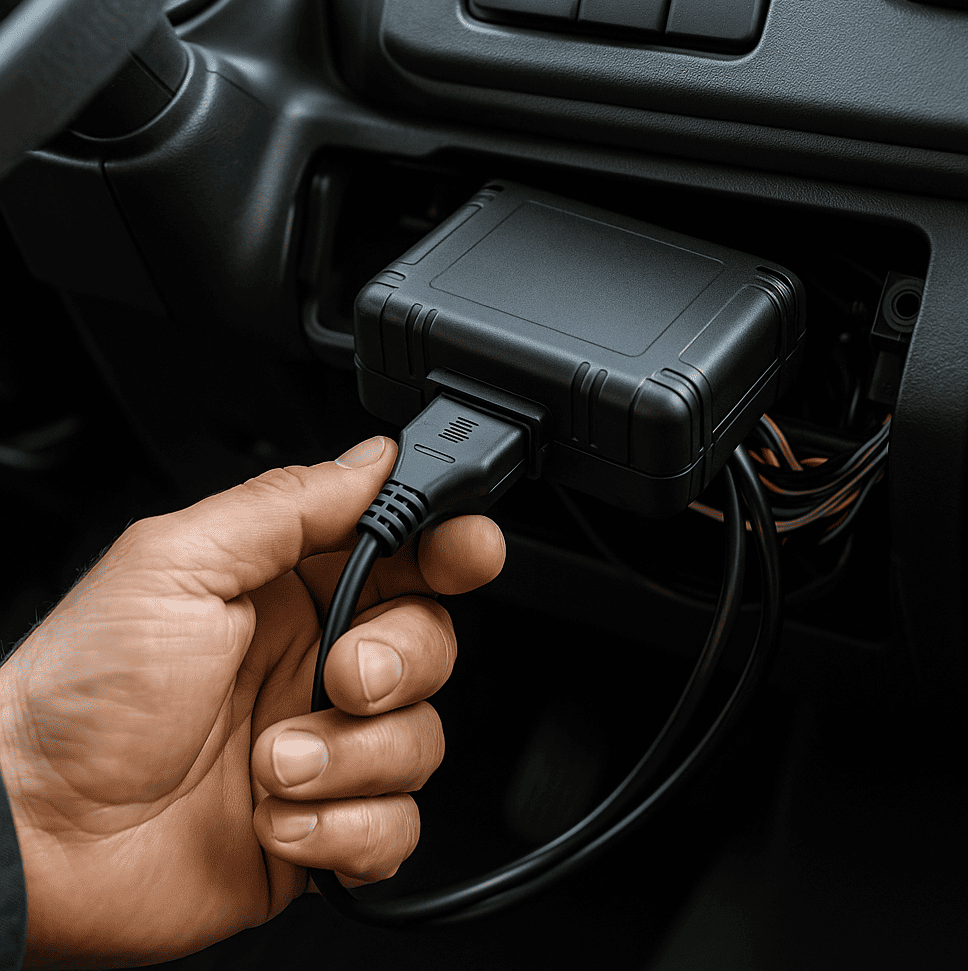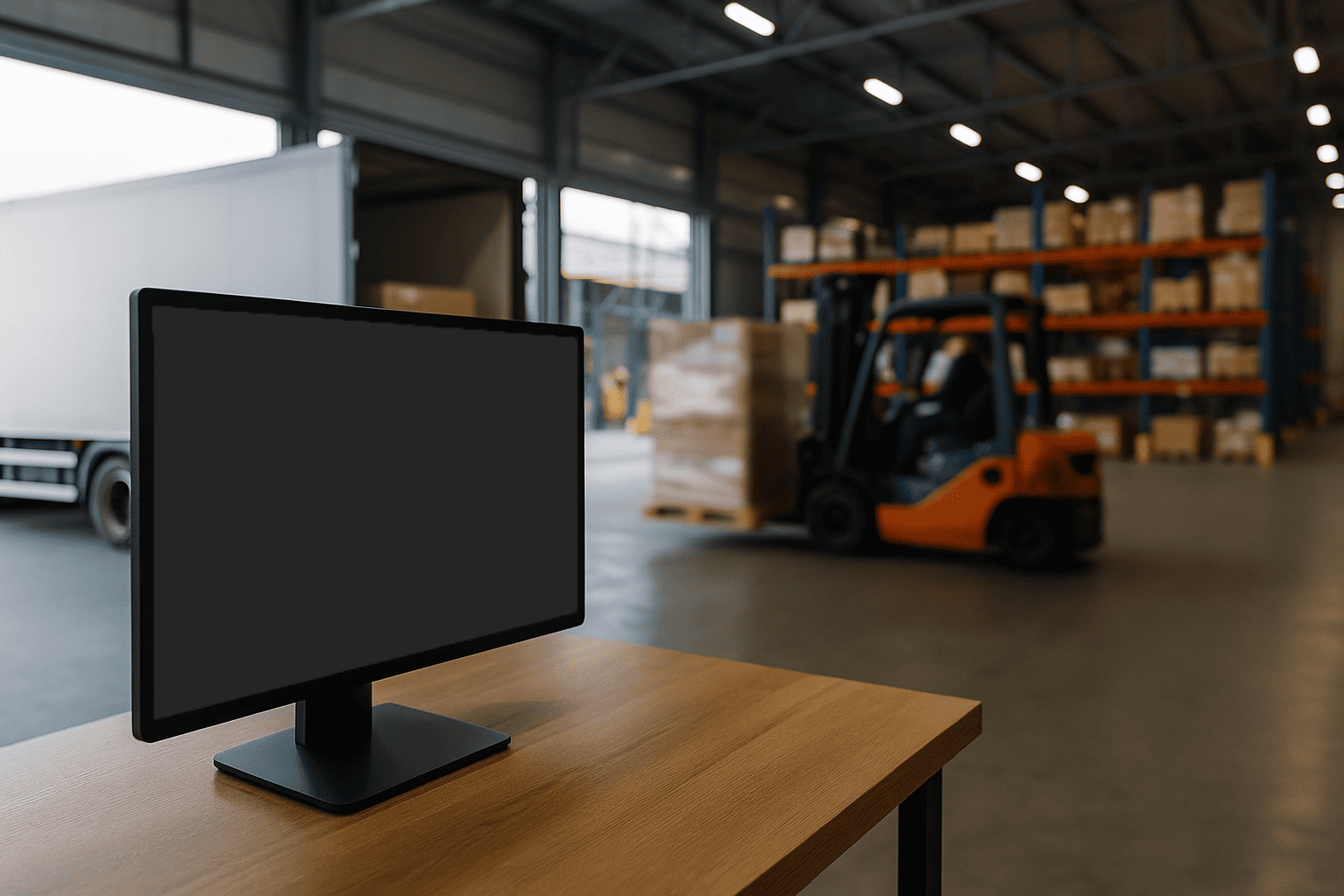Sommaire
In road transport, every euro counts. With fuel prices rising steadily, maintenance costs on the rise, and customer pressure on prices, hauliers' margins are under severe pressure. Yet behind the visible expenses lie invisible transport costs: avoidable reductions in mileage, unplanned downtime, duplication between departments, and lack of coordination between operations, fleet and maintenance.
These silos hamper performance and eat away at profitability. Yet, solutions do exist: synchronizing transport planning (TMS), fleet management and maintenance not only reduces your direct costs, but also enhances operational reliability and service quality.
In this article, we present a plan structured around three pillars - intelligent planning, synchronized maintenance and optimized fleet management - as well as a strategic planning methodology for rapid, measurable ROI.
Pillar 1 - Intelligent planning via TMS
The first lever for reducing logistics costs is flow planning. All too often, routes are still drawn up manually or using simplified rules (zones, fixed times), resulting in empty miles and poor utilization of available resources.
A modern transport management system acts as a real transport software and optimization tool. It overcomes this approach thanks to efficient methods and real-time data:
- Consolidation of shipments: grouping of compatible shipments to maximize truck fill rates.
- Route optimization to reduce the weight of empty runs.
- Dynamic planning: change delivery mode according to constraints (delays, cancellations, traffic restrictions).
Beyond transport optimization, the TMS serves as a management platform or decision-making cockpit for the buyer and transport operator:
- Carrier selection based on objective criteria (cost analysis, performance, available capacity).
- Flexible pricing models (per kilometer, per route, per service rendered), enabling transport purchases to be adapted to the actual flow profile.
- Real-time monitoring via telematics, reducing the cost of contingencies thanks to rapid decisions (transport KPIs, rerouting, allocation of another vehicle, proactive communication with the customer).
👉Transporters who adopt this type of technology to optimize see a 5-10% drop in the number of kilometers traveled, shorter delivery times and improved delivery in the event of hazards.
Pillar 2 - Synchronized maintenance for lower cost reliability
A vehicle immobilized at the wrong time is costly: lost sales, emergency chartering, penalizing delays, customer dissatisfaction. And yet, according to several studies, the costs associated with unanticipated breakdowns are up to 3 times higher than those of planned preventive maintenance.
Synchronizing maintenance, fleet and operations enables resources to be optimized and costs to be managed more effectively:
- Planned preventive maintenance: thanks to telematics data and service history, operations can be triggered before breakdowns occur (overhauls, replacement of critical parts, tire checks).
- Coordination with tours: by integrating workshop availability into the TMS, you avoid immobilizing a vehicle scheduled for a strategic mission. Interventions are positioned on off-peak times or on planned returns to the depot.
- Key indicators and automated alerts and diagnostics: connected solutions transmit real-time information on engine condition, fault codes or wear, enabling deviations to be measured and a potential breakdown to be transformed into a simple scheduled stop.
👉 The result: a direct 15% reduction in workshop costs, increased availability and lower total cost of ownership. It also means overall logistical optimization: less costly recourse to replacement solutions, and a positive environmental impact thanks to fewer non-productive journeys.
But the impact goes beyond the "workshop" item: a more reliable fleet also means more robust transport planning, less costly recourse to replacement solutions and greater customer satisfaction.
Pillar 3 - Fleet management: visibility and savings
Beyond planning and maintenance, fleet management is a central lever for optimizing transport costs. Telematics and real-time monitoring tools provide visibility that transforms data into tangible savings.
Reduce your transport budget thanks to data:
- Fuel consumption analysis: identify over-consumption linked to driving, excessive slowing down or poorly planned journeys.
- Eco-driving and behavior monitoring (sudden slowing down, speeding, over-revving): each optimized driving point can reduce fuel bills and mechanical wear and tear by 5 to 10%.
- Optimize loads to maximize each mission,
- Route optimization: limit detours, traffic jams and unnecessary toll zones, thanks to GPS data integrated into the TMS, helping to reduce your costs.
Adapt fleet size and usage
- Precise fleet sizing: analysis of fill rates and kilometers traveled to identify under-utilized vehicles and reduce stranded assets.
- Optimal vehicle layout: adapt configurations (capacity, specific equipment) to the types of goods actually transported, to avoid paying for "empty vehicles".
Visibility for rapid decision-making
A connected fleet manager knows in real time where his vehicles are, their status and availability. This global visibility makes it possible to :
- reassign a vehicle immediately in the event of a problem,
- anticipate indirect costs (waiting time, penalties),
- and improve the profitability per kilometer of each mission.
👉 A cost management system integrated into a TMS or management platform helps to align fleet, operations and maintenance. At the same time, good eco-driving practices help to reduce emissions and carbon footprints, while boosting the competitiveness of companies in the sector.
Implementation methodology
Reducing transport costs is not based on a single "best practice", but on a structured approach. TMS - fleet - maintenance synchronization must follow a clear plan, to limit risks and maximize ROI.
Initial audit
- Analysis of current flows (kilometers traveled, load factor, use of charters).
- Inventory of historical costs (fuel, tolls, maintenance, penalties, under-utilization).
- Identification of operational breaking points: frequent breakdowns, vehicles immobilized at the wrong times, areas of over-consumption.
Solution selection and integration
- Selection of a TMS adapted to the business, volume and size of the company (ability to integrate with telematics and CMMS).
- Data connection between modules: transport planning ↔ fleet tracking ↔ maintenance workshop.
- Implementation of automatic alerts and unified dashboards.
Progressive deployment
- Start with a pilot site or a restricted geographical area.
- Involve operators, drivers and workshop managers in the test phase.
- Adjust settings before generalizing.
Ongoing performance measurement
- Financial KPIs: TCO, cost per kilometer, maintenance budget.
- Operational KPIs: breakdown rate, empty kilometers, fill rate, fleet availability.
- CSR KPIs: CO₂ emissions avoided, reduction in unnecessary journeys.
Adjustment and global deployment
- Replication of methodology across all company resources.
- Implementation of quarterly reviews to adjust processes and maintain gains.
- Ongoing training of teams to sustain results.
👉This structured approach is based on strategies for continuously improving operational efficiency, while generating a visible reduction in logistics costs from the very first months.
Expected results ROI
Synchronizing TMS, fleet management and maintenance is not a long and costly transformation project: it's an approach that produces visible effects from the very first months.
In concrete terms, carriers generally see a 5-10% drop in empty kilometers, thanks to better consolidation of routes and more appropriate choice of carriers. Fuel consumption follows the same trajectory, with a reduction of 5-8% as a result of eco-driving, telematics monitoring and the detection of risky behavior. In terms of maintenance, the benefits are even clearer: preventive planning and the reduction of unplanned breakdowns cut costs by almost 15%, while extending vehicle life.
These combined results translate into a reduction in TCO (Total Cost of Ownership) of up to 10%, a reduction in indirect costs (late penalties, unscheduled downtime) and improved fleet availability. In other words, every euro invested in systems integration is quickly offset by the savings generated.
With the right methods and an appropriate optimization tool, ROI is generally measured between 6 and 12 months. The gains are not one-off, but cumulative: a better-maintained and better-driven vehicle retains a higher residual value, which limits the expenditure involved in fleet renewal.
In short, the "TMS - fleet - maintenance" approach enables us to transform a logic of costs incurred into a sustainable financial lever, directly visible in operating margins.
Conclusion
In a sector where every liter of fuel, every hour of downtime and every kilometer traveled counts, optimizing transport costs can no longer be based on one-off adjustments. It's the fine-tuned orchestration between TMS, fleet management and maintenance that transforms data into decisions, and decisions into measurable savings.
By synchronizing route planning, vehicle availability and condition monitoring, carriers can move from a reactive to a proactive management approach. The benefits are rapid and tangible, and go far beyond simply reducing costs: they also enhance operational reliability, customer satisfaction and the ability to absorb growth without exploding costs.
At Sinari, we support carriers in this process every day, with solutions designed to integrate existing systems and deliver a tangible return on investment.



.webp)






